How to Choose an Area Rug
Choosing an area rug can be overwhelming. It involves more than just picking the right size, material, or pattern. This guide gives you all the tips and tricks for finding the perfect rug for any room in your home.
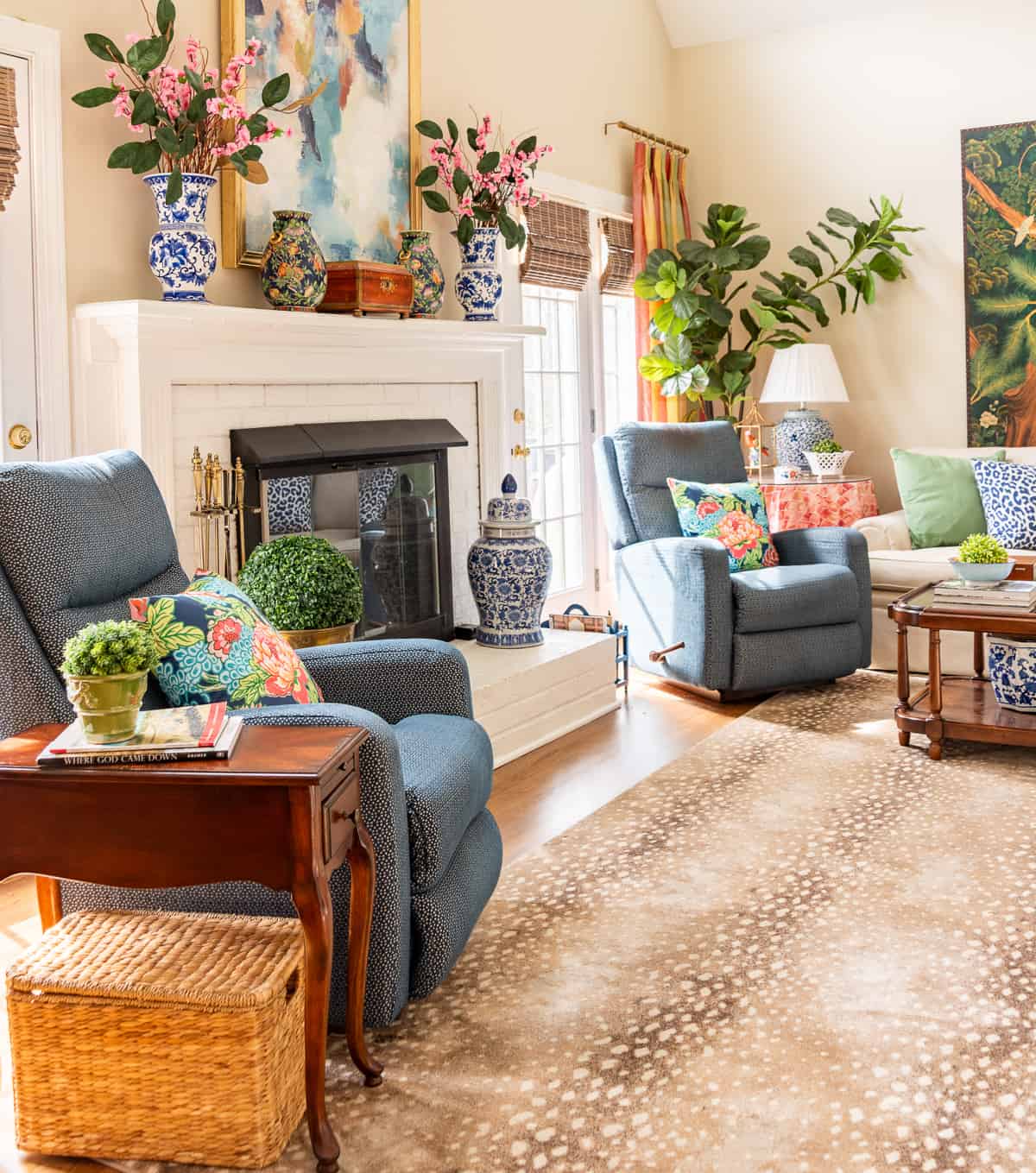
Ugh – is rug shopping a pain point for you? It sure has been for me sometimes. Trying to find the perfect rug can be a lesson in frustration. Let’s fix that!
Before buying an area rug
The first order of business, prior to purchasing a new rug, is to know the room that it will be used in and how that room is used.
For example, you may know that the rug is for your living room, but do you have pets and need a rug that is stain resistant?
Or is it a rug that will be in a high traffic area where durability matters?
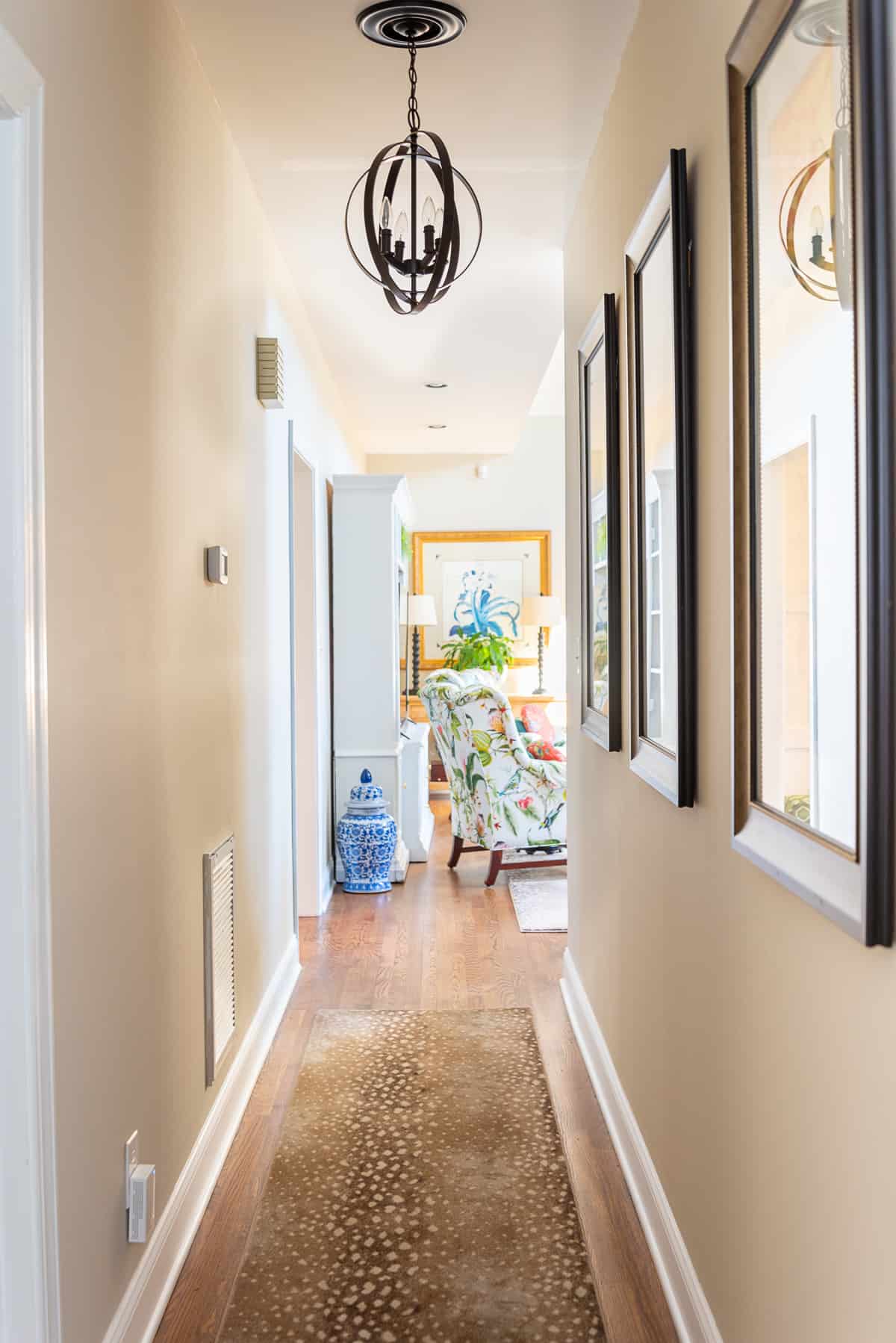
Do you need a low pile rug so that a door can easily open? That’s often the case with rugs that will be used in entryways.
There are other less obvious considerations as well.
- Do you have any allergies or sensitivities to certain materials? Rugs made with synthetic fibers such as nylon, polypropylene, and polyester can off-gas volatile organic compounds (VOCs). A natural fiber rug made with materials such as wool, cotton, or jute, is less likely to emit VOCs compared to a synthetic rug.
- Is there underfloor heating in the room where the new rug will be located? If so, you’ll want to ensure the rug and its backing are compatible with this feature.
- Think about slip resistance, which is especially important in homes with elderly residents or young children.
- Is the rug colorfast? If it will be placed in a sunny area, consider its resistance to fading.
Choosing the area rug size and shape
Selecting the perfect area rug for your space is a lot like selecting the perfect frame for a painting.
Just as a frame can either enhance or overpower a piece of art, the correct (or incorrect) rug will have the same impact on your space.
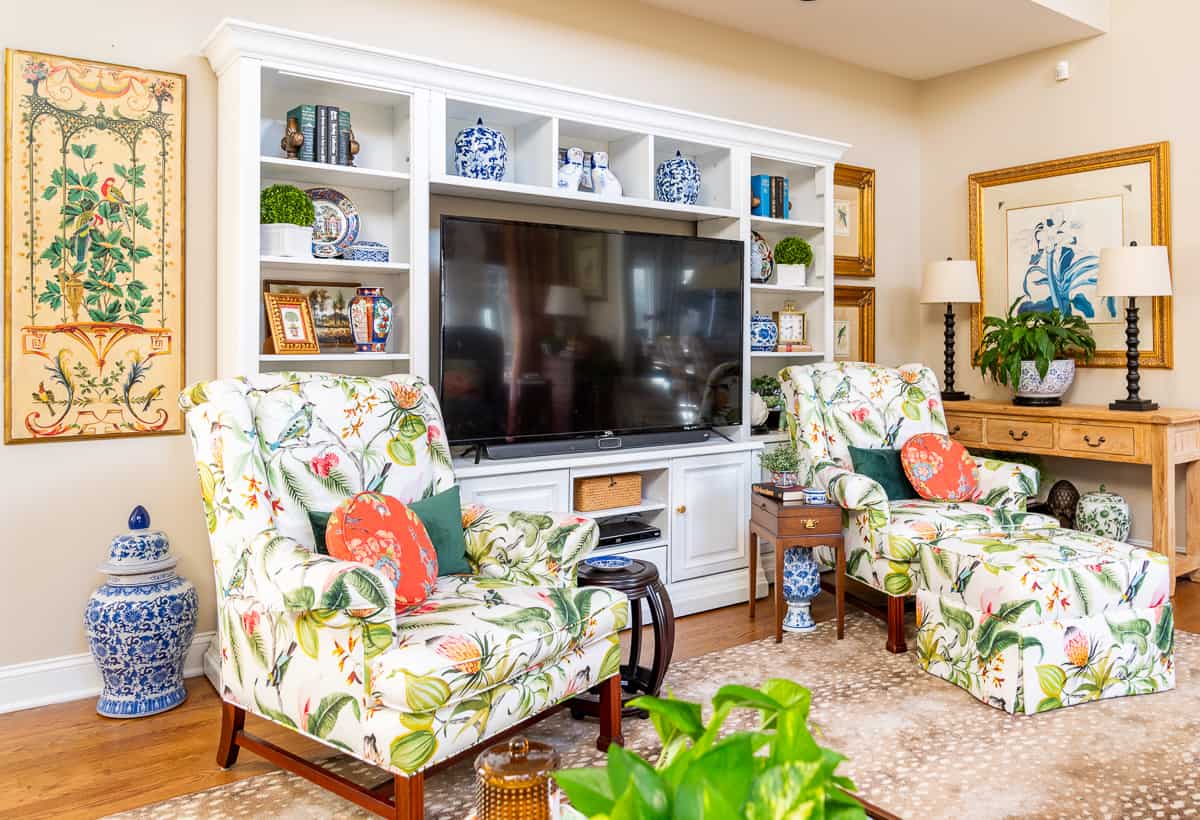
The rug should be proportional and complementary—neither too small, so that it gets lost under furniture, nor so large that it overwhelms the room.
Just as a well-chosen frame complements a painting and integrates it beautifully into your decor, the right rug should tie all the elements of a room together harmoniously.
Living Room
If your sofa is against the wall, the rug should at least accommodate the front legs of the sofa and any armchairs next to it.
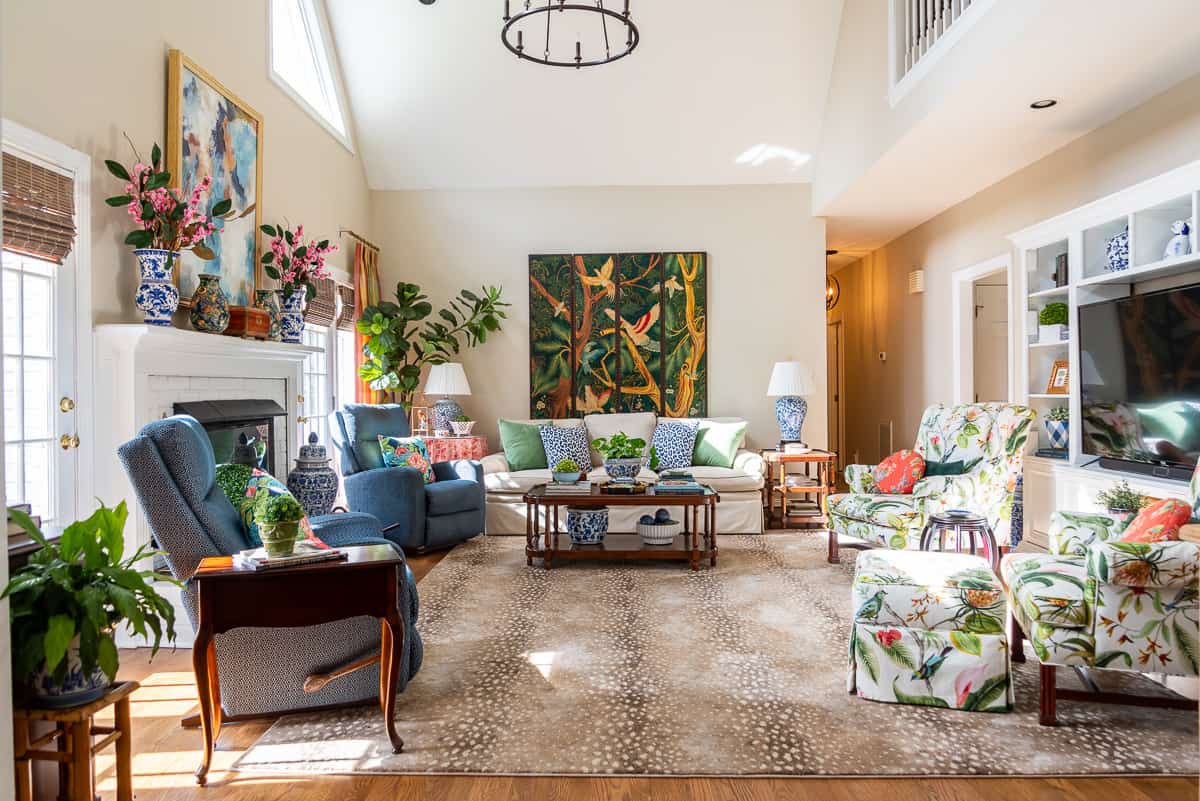
For a floating seating area, the rug should comfortably fit all pieces of furniture, both front and back legs, with a nice border of space around the edge.
Depending upon your budget, wool rugs are typically the best choice for living areas. They are renowned for their softness, strength, and natural ability to resist stains and dirt.
Dining Room
When it comes to your dining area, use the size of your dining table as a guide.
The rug should extend at least 24 inches beyond the table in all directions. This ensures that chairs still sit on the rug even when they’re pulled out.
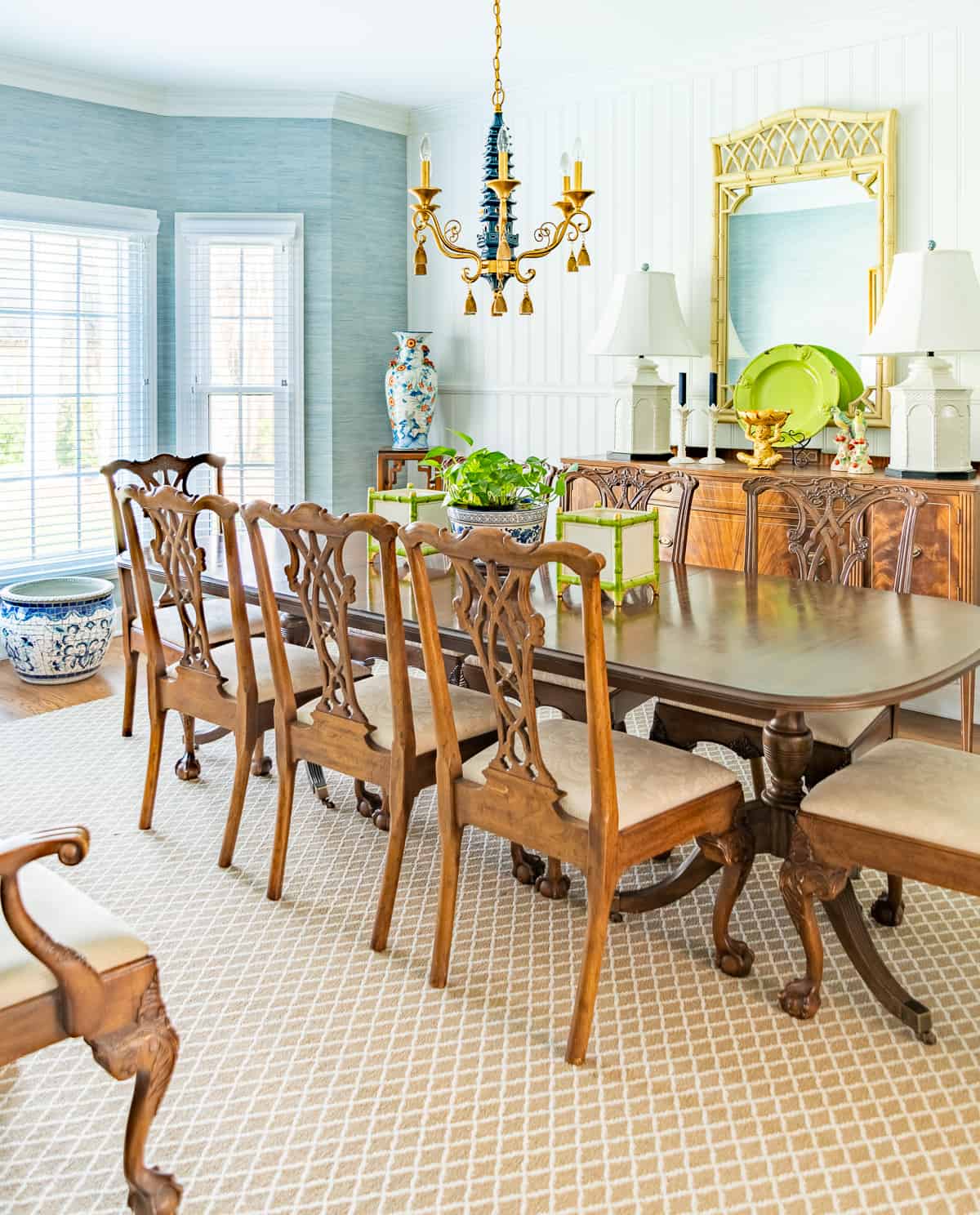
Ease of cleaning and stain resistance is an important factor when choosing a rug for a dining space. The best choice of material is usually a flatweave or low-pile rug made from natural fibers like wool or synthetic fibers like polypropylene.
Wool is particularly good because it naturally repels stains and water, while polypropylene is highly stain-resistant and can be cleaned with a simple wipe-down.
Bedroom
In larger bedrooms, a rug that fits under the entire bed and bedside tables, with extra room on the sides, makes the space feel lush and cohesive.
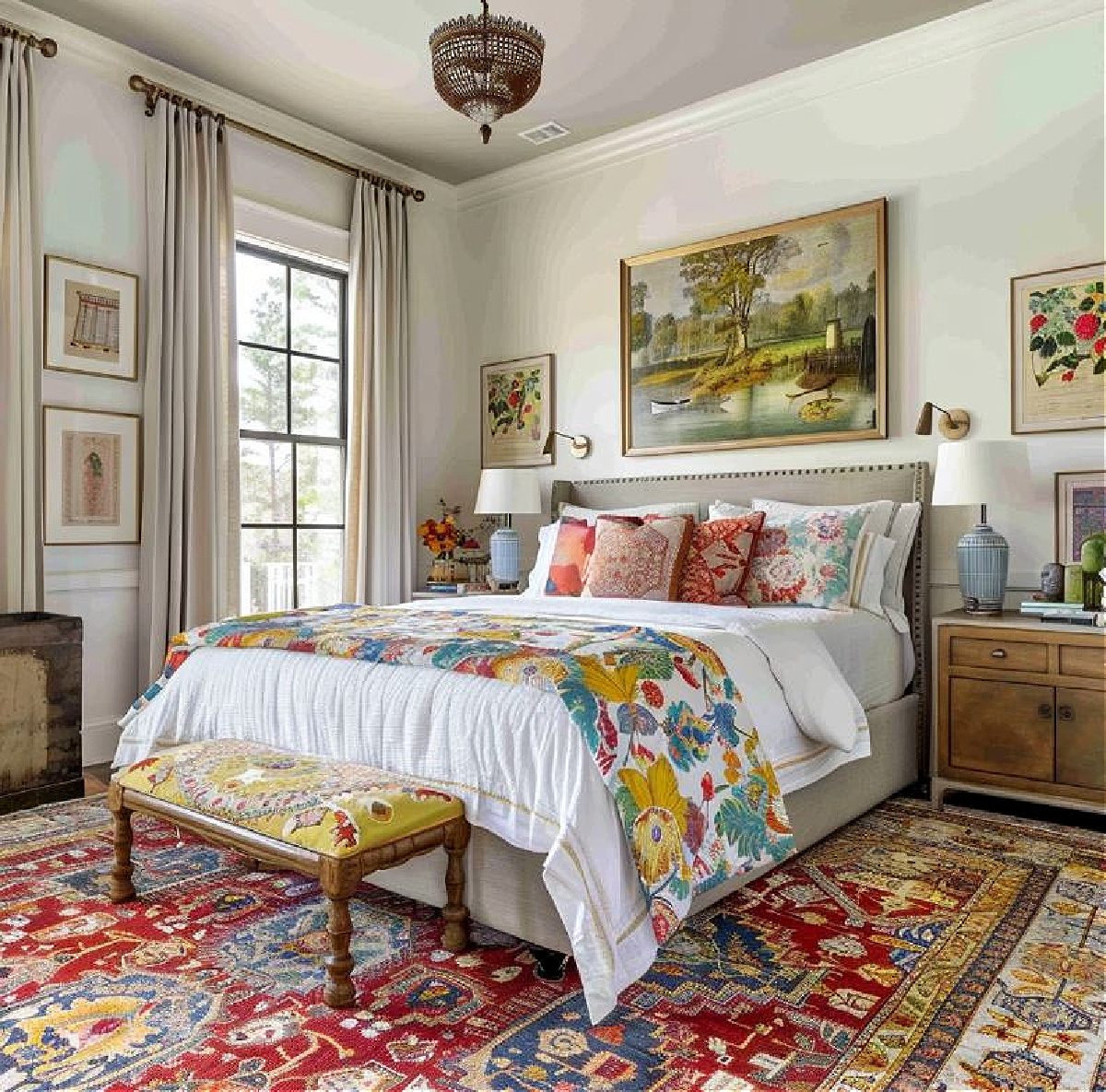
If there are budget constraints, another perfectly fine option is to opt for a rug that is large enough to only go partially underneath the bed.
Can you still have an area rug in a bedroom with carpet? Absolutely! Look for a rug that compliments the carpeting that you can layer over it.
In bedrooms, where comfort and warmth are usually key, wool is once again the recommended fiber of choice for area rugs. Rugs made with cotton are also a great choice and are usually more budget friendly than wool.
Kitchen and Entryway
These areas work well with more compact options like narrow runners or small rugs (around 2′ x 3′ or 4′ x 6′) to add a touch of style without overwhelming the space.
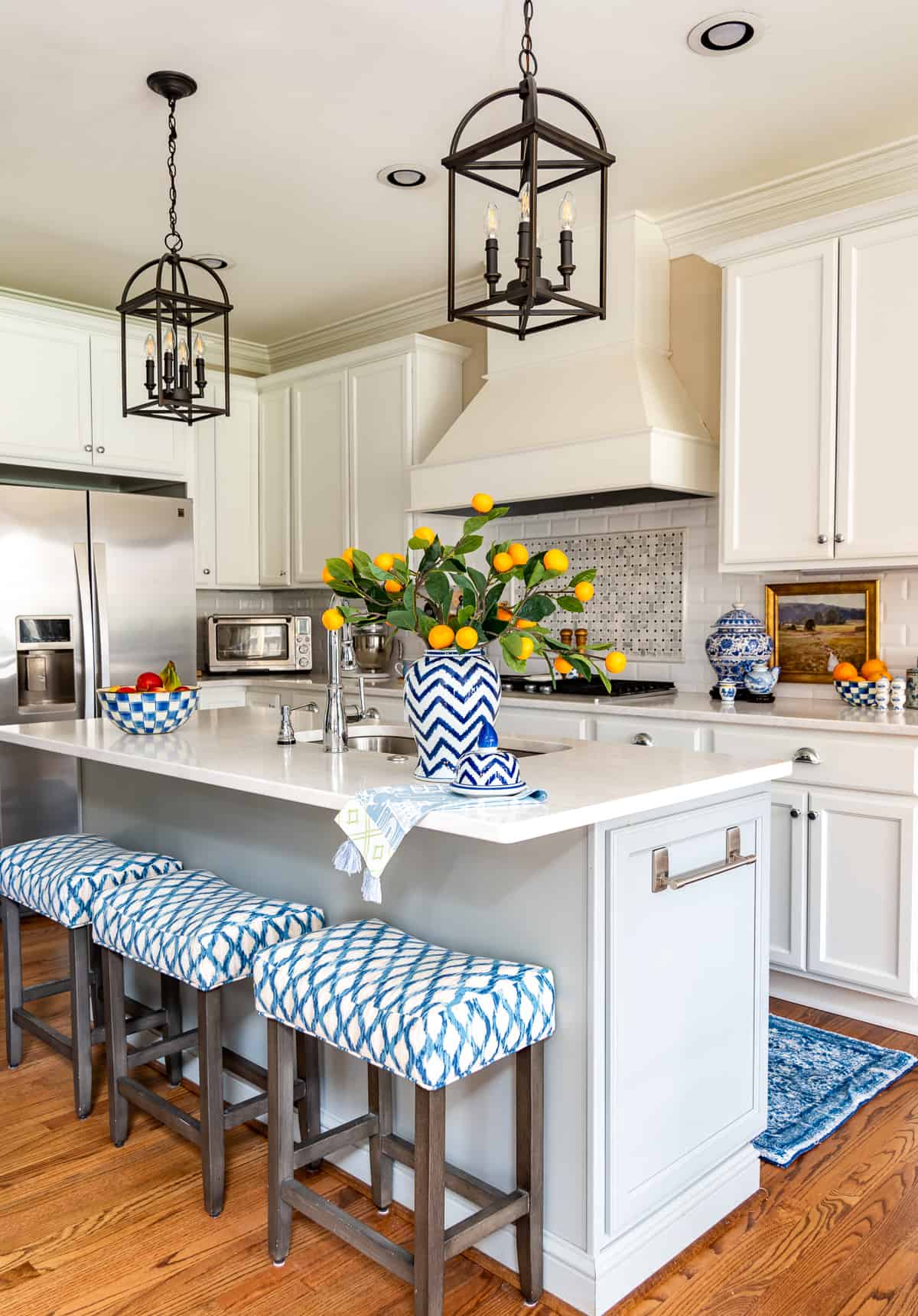
These are usually high traffic areas of your home, so look for a rug that is durable and stain resistant.
For kitchens and entryways, where traffic is high and spills are common, the best choices are typically synthetic fibers like polypropylene or nylon.
Outdoor Areas
Go for something a bit larger outdoors, with the rug ending 12 to 24 inches from the perimeter of the space to frame it beautifully.
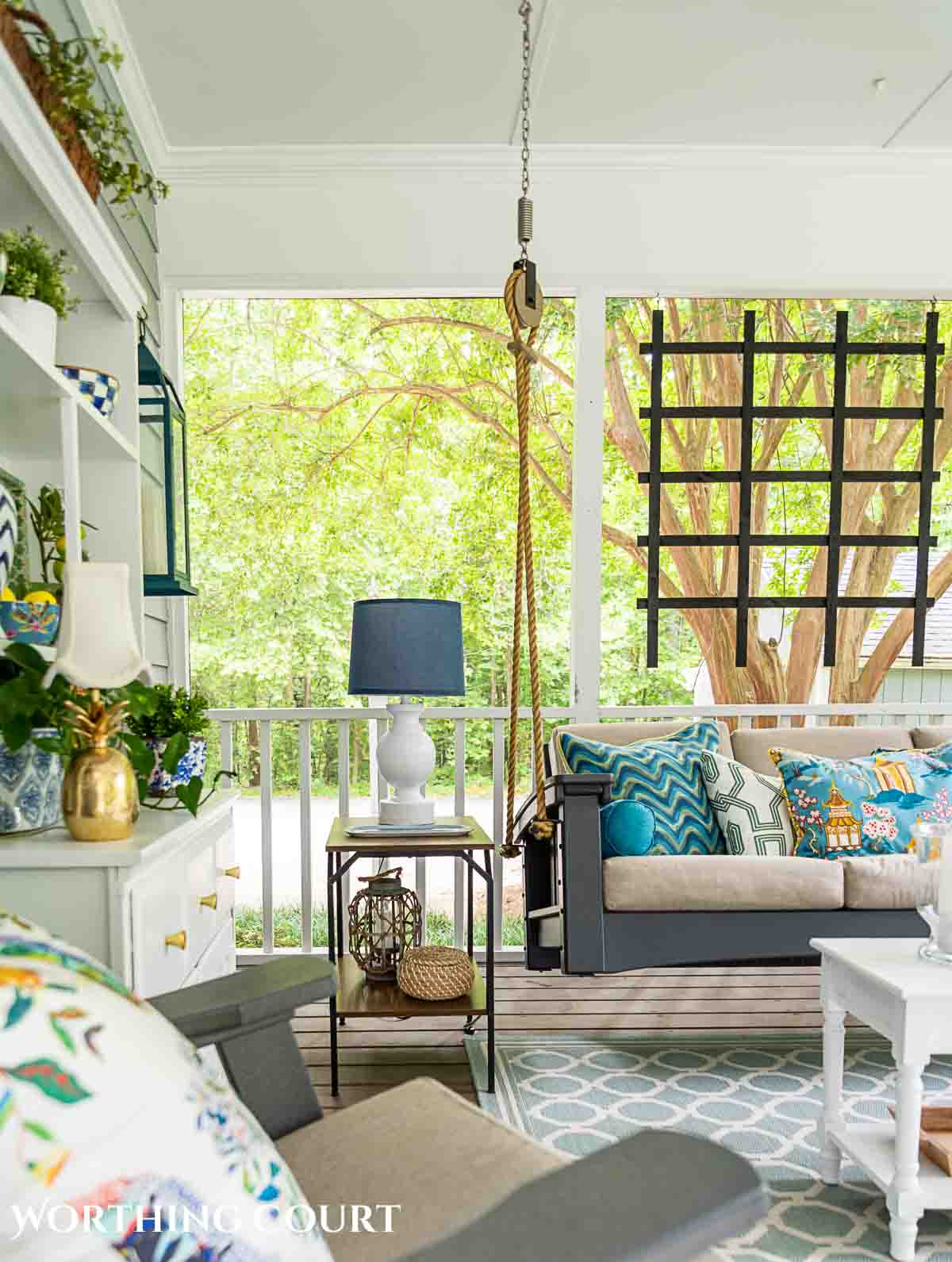
When shopping for outdoor rugs, polypropylene is king. You just can’t beat it for being water and fade resistant and for being easy to clean. It can endure rain and harsh sun, making it a great choice for outdoor spaces.
How to Measure for an Area Rug
To ensure you get the size just right, measure your room and subtract 1 to 2 feet from each dimension to determine the ideal rug size.
The perfect living room rug formula: mid to high pile, larger in size
Most used dimensions: 8′ x 10′, 9′ x 12′, 10′ x 14′.
The perfect dining room rug formula: flatweave to low to mid-pile rug
Most used dimensions: 9′ x 12′, 10′ x 14′, 8′ round.
The perfect bedroom rug formula: Mid-to high-pile
Most used dimensions: 8′ x 10′, 9′ x 12′ or 2′ x 6′, 4′ x 6 ‘ for each side of the bed.
The perfect formula for kitchens and entryways: Low-pile, patterned rug
Most used dimensions: 2.5′ x 8′, 2′ x 3′, 3′ x 5′, 6′ x 9.’
The prefect outdoor rug formula: flatweave that is UV-resistant
Most used dimensions: 8′ x 10′, 9′ x 12′, 10′ x 14.’
Choosing the style of your area rug
The style that you choose really hinges on your lifestyle and overall design style.
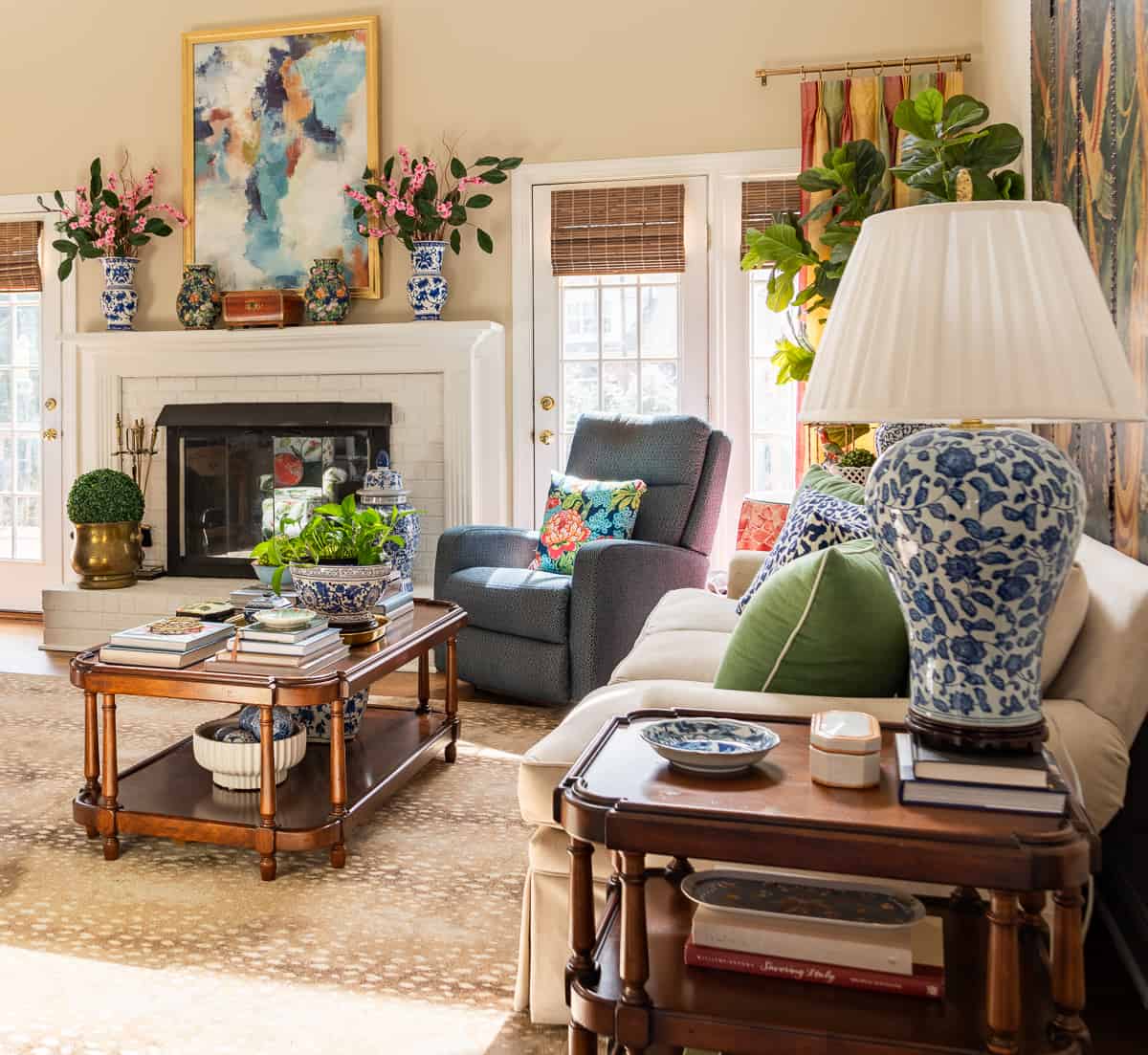
You have a lot of freedom, but if using rugs in open floor plans or adjoining rooms, you’ll want to make sure they coordinate and don’t fight with one another.
Here’s a little guide to help you get a feel for the different rug styles:
- Traditional Rugs: Think classic designs like Persian, Oriental, Moroccan, and Berber. These rugs usually add a rich, historical touch to any room. Traditional style wool rugs are typically the priciest, but there are many synthetic options available that are more affordable.
- Contemporary Rugs: These are perfect if you’re into more modern aesthetics. Styles range from Mid-Century modern to bold geometric patterns, as well as themes like Coastal, Country, and Farmhouse.
- Natural Rugs: Made from materials like jute, sisal, silk, sheepskin, leather, and cowhide, these rugs are a big contributor to textures in a room and bring a piece of the natural world to the indoors.
- Bohemian Rugs: For a more laid-back or eclectic vibe, boho styles like shag, Kilim, Dhurrie, Southwest, and Ikat are ideal. They often feature vibrant colors and patterns, great for adding a splash of personality to a room.
How to care and clean for an area rug
It’s inevitable that you’ll eventually have dirt and spills on your rug, especially if there are kids around.
So, when choosing an area rug, it’s smart to consider how you’ll keep it clean from the get-go. Interestingly, older or vintage rugs often outlast newer, more affordable ones in terms of durability.
Here’s a quick guide on how to care for and clean different rug materials:
- Synthetics: These are fairly easy to maintain. You can spot-clean, steam-clean, or vacuum them. Be aware, they might show dirt more because they tend to absorb dirt and oil, though many, like acrylics, are stain-resistant.
- Wool: Thanks to natural oils like lanolin, wool rugs are somewhat spill-resistant. If you do get a stain, blot it first to absorb any excess. Then, gently use a toothbrush with dish soap and water to lift the stain. It’s important not to scrub, as that can damage the fibers.
- Cotton and Silk: These materials are a bit more delicate, so it’s usually best to use professional cleaning to avoid pushing stains deeper into the fibers.
Do you need a rug pad?
After finding your perfect rug, it’s time to think about longevity, which is where a rug pad comes in.
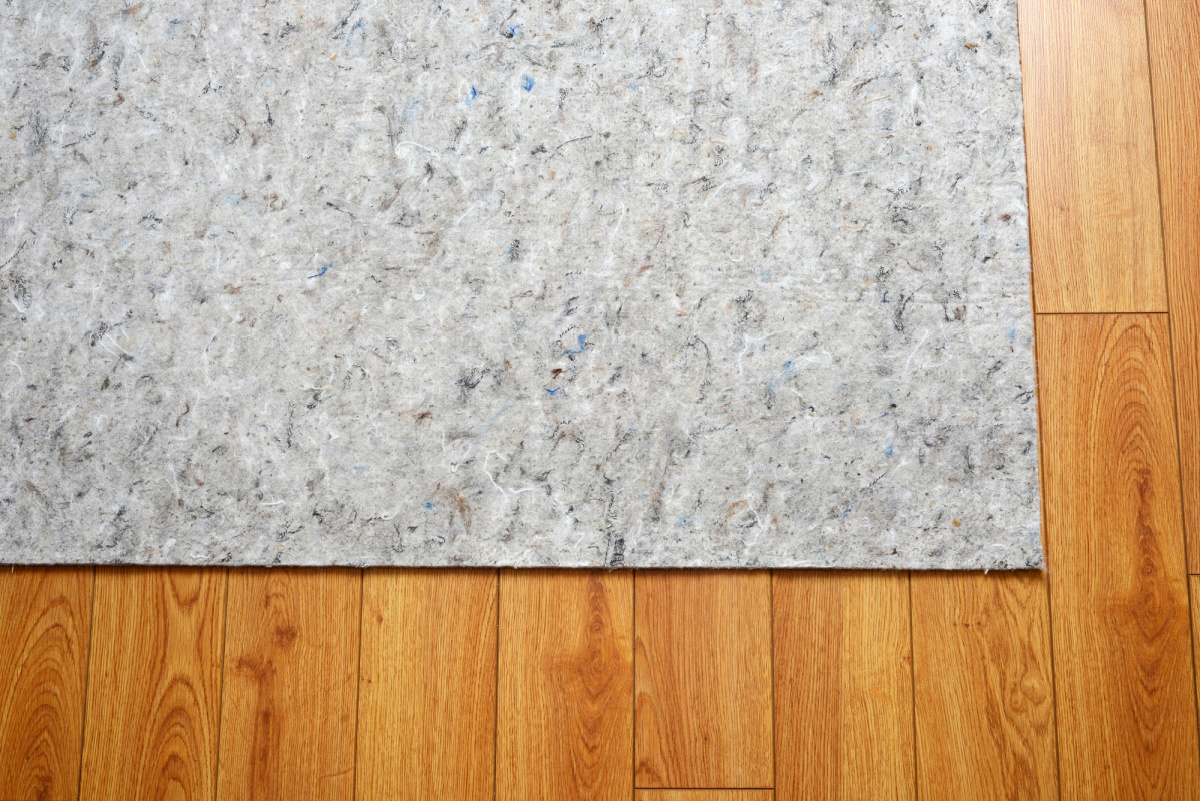
They help prevent slips by keeping your rug firmly in place, which is particularly important if the rug tends to bunch up. Additionally, they protect your floors from dents and scratches caused by heavy furniture sitting on the rug.
For areas like the kitchen or bathroom, where there’s a lot of foot traffic, choose a rug pad with a strong grip to ensure stability.
In more relaxed spaces like the bedroom or living room, a cushioned rug pad can add a lovely touch of soft, plush comfort underfoot.
Investing in the right rug pad will not only extend the life of your rug but also enhance its functionality and your enjoyment of it.
TIP: Use painter’s tape to mark out the edges of the rug on the floor, helping you visualize how it will fit in your room before you buy.
Area rug don’ts
With all of these area rug ‘do’s’, it’s also important to make note of a few area rug ‘don’ts.
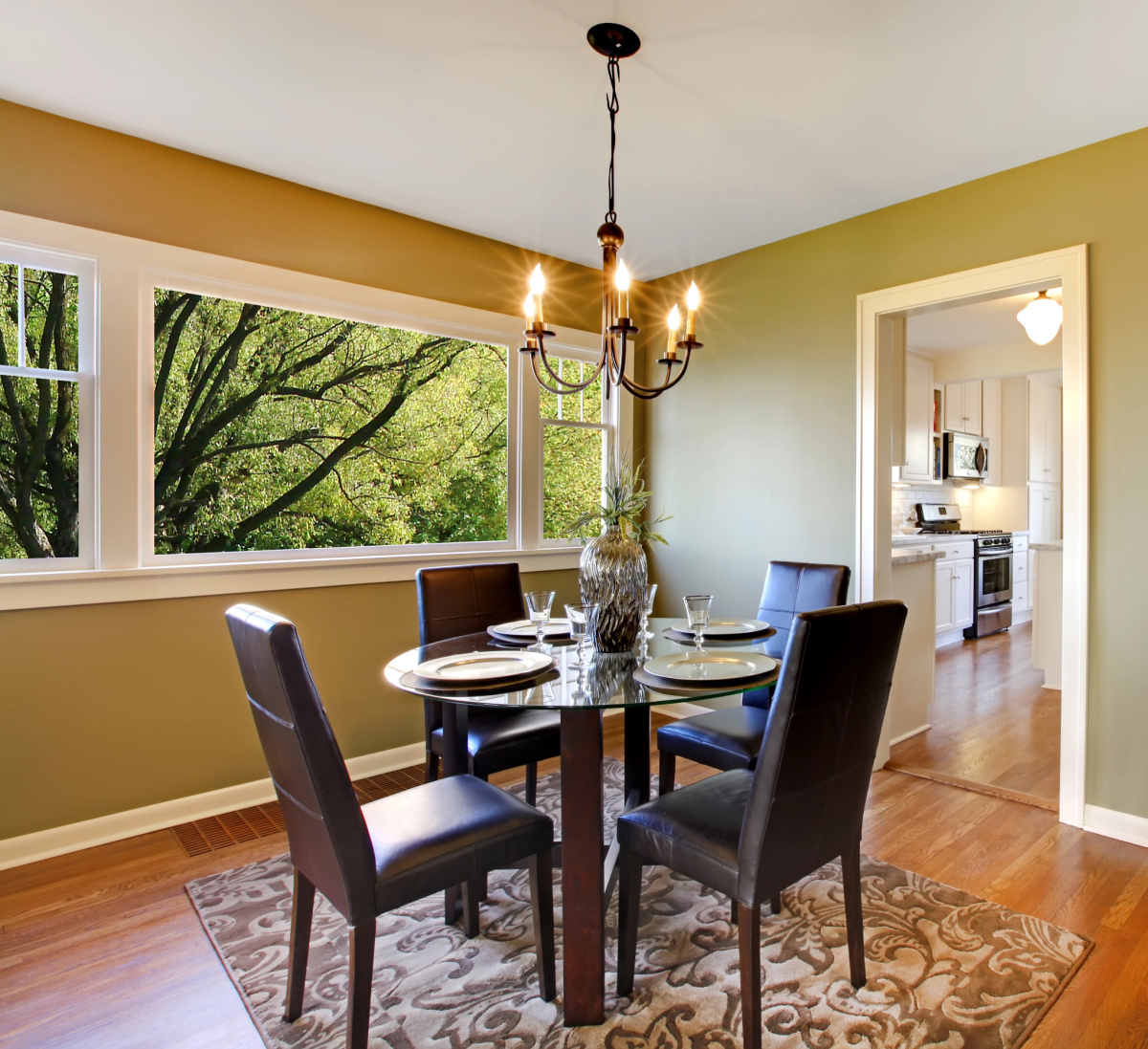
- Don’t choose a rug that’s too small for the room or use a tiny rug in a large room. It’s a sure-fire way to wind up with a room that feels disjointed, unbalanced and unfinished.
- Don’t skimp on coverage under dining tables. Nothing is more annoying than having the back legs of a chair get caught on the edge of an area rug when trying to scoot up to the table.
- Don’t forget to consider bottom of the door clearance.
- Don’t forget to consider color and pattern. Avoid choosing rugs with colors or patterns that clash with your existing decor.
- Don’t neglect maintenance. Different materials require different cleaning methods. Allowing your rug to remain dirty can lead to premature wear and tear.
By avoiding these pitfalls, you can ensure that your rug not only fits well within your space but also enhances the overall look and function of the room.
With all this insight, choosing the right area rug should feel a little less daunting. Each choice contributes to making your home more welcoming and styled to your taste.
So, measure carefully, consider your lifestyle and decor, and choose a rug that not only looks great but also fits perfectly into your home.
By avoiding common pitfalls and focusing on what truly matters to you, you’ll find the perfect rug that complements your space and enhances your home for years to come. Happy rug hunting!
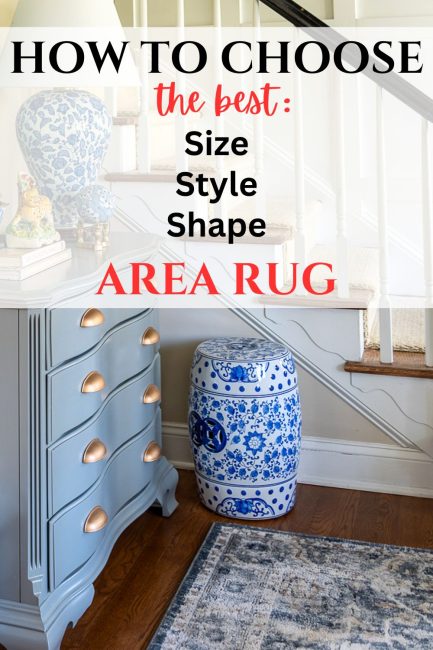
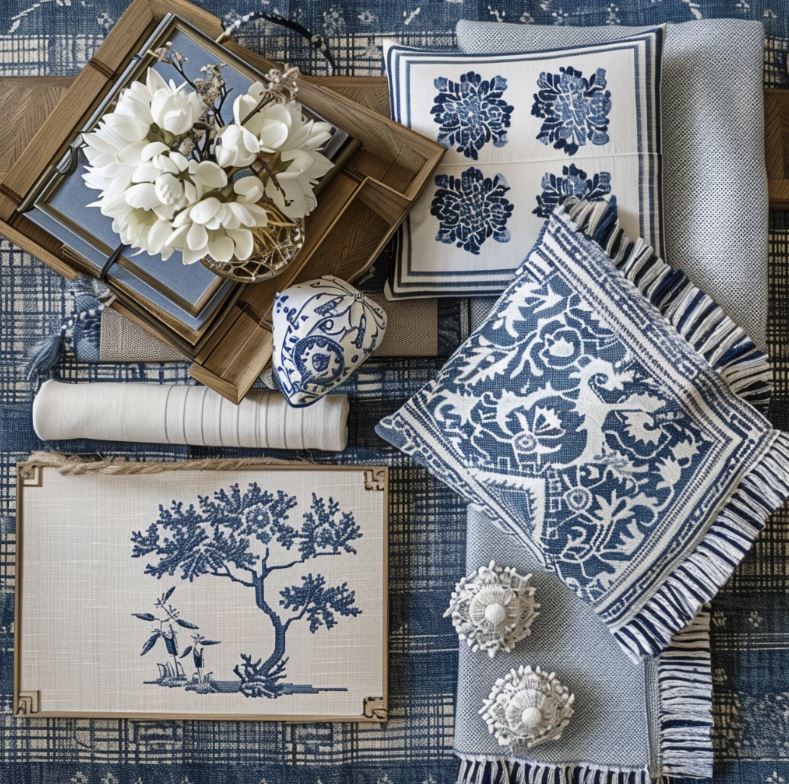
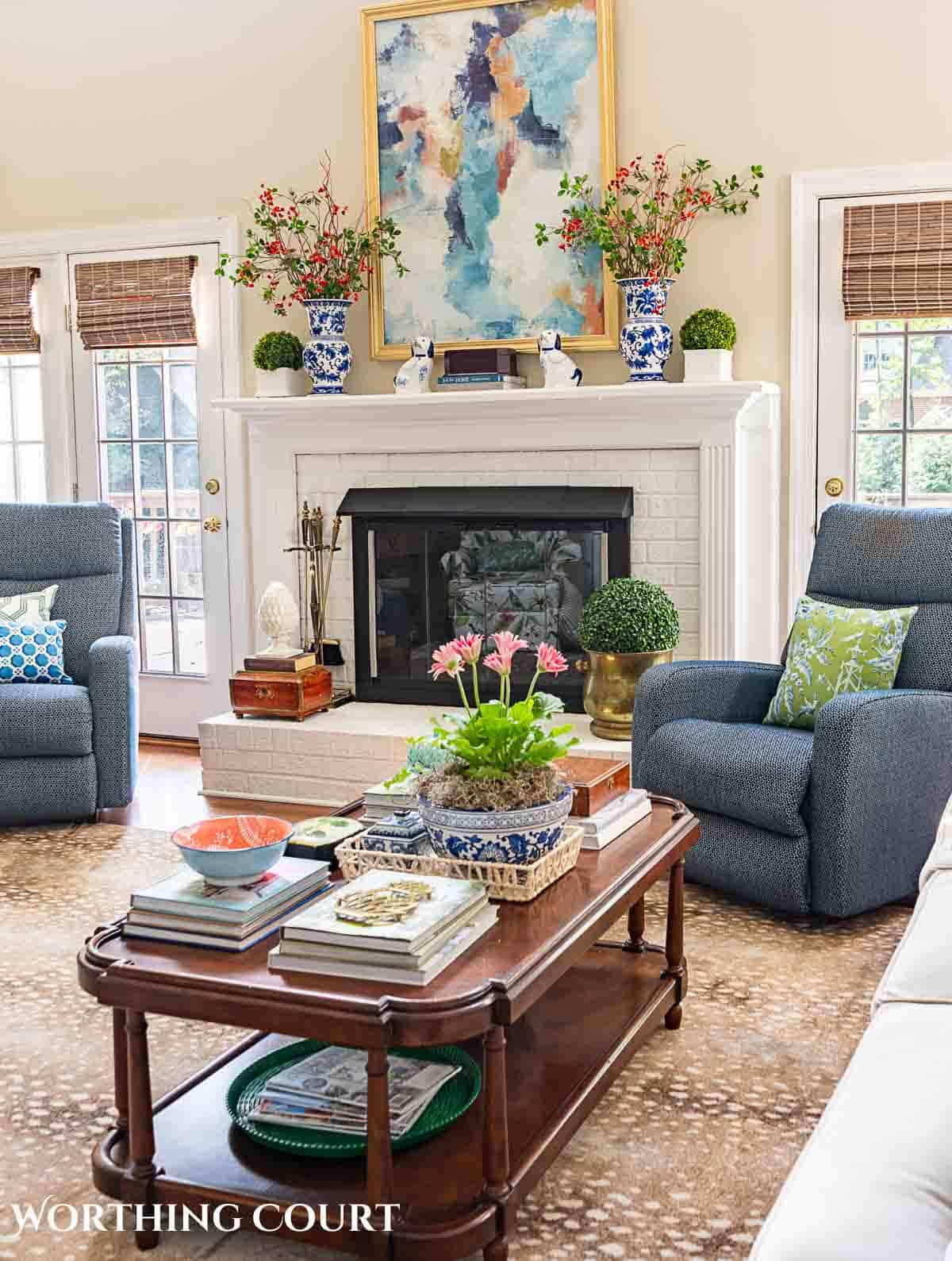
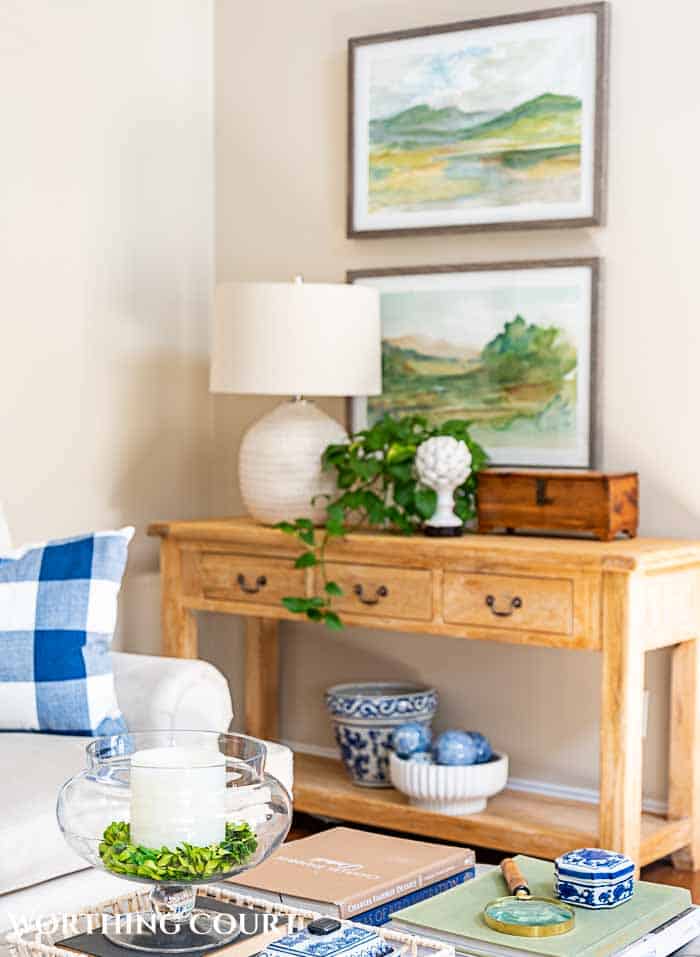

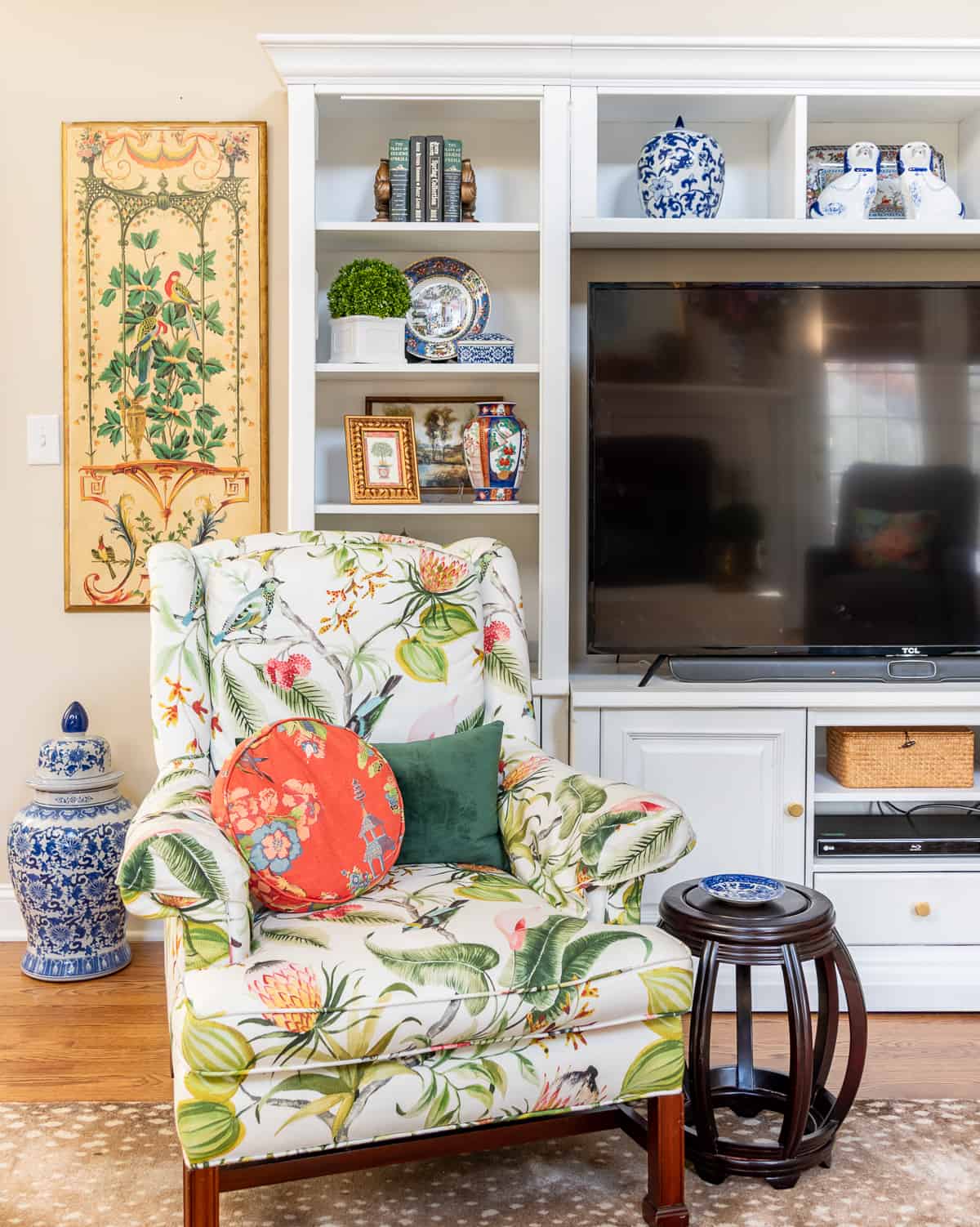
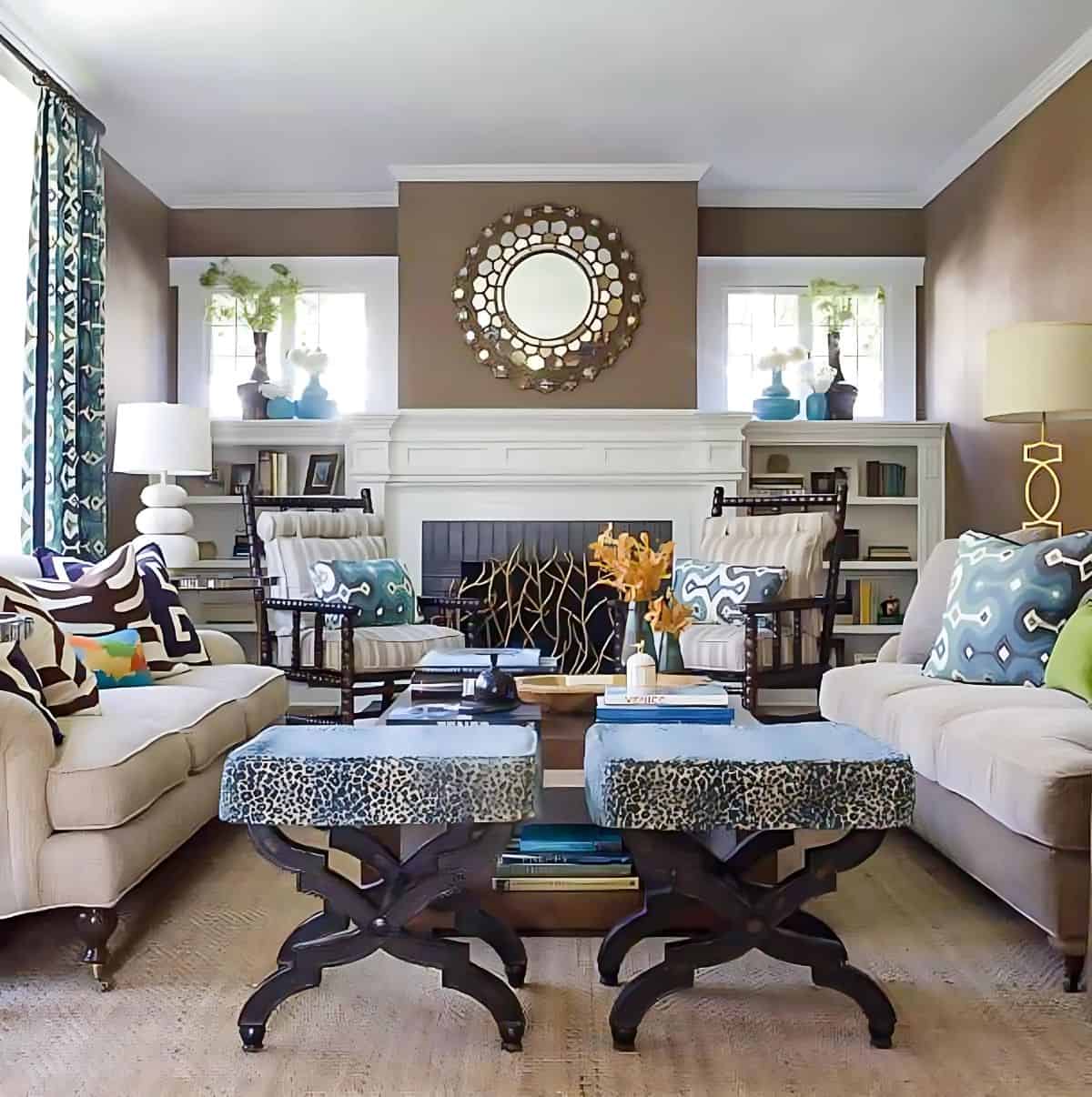
What a great post with SO much information about choosing rugs!! Thank you so much! I know it took a lot of time to put all this info together!! Pinning this!!